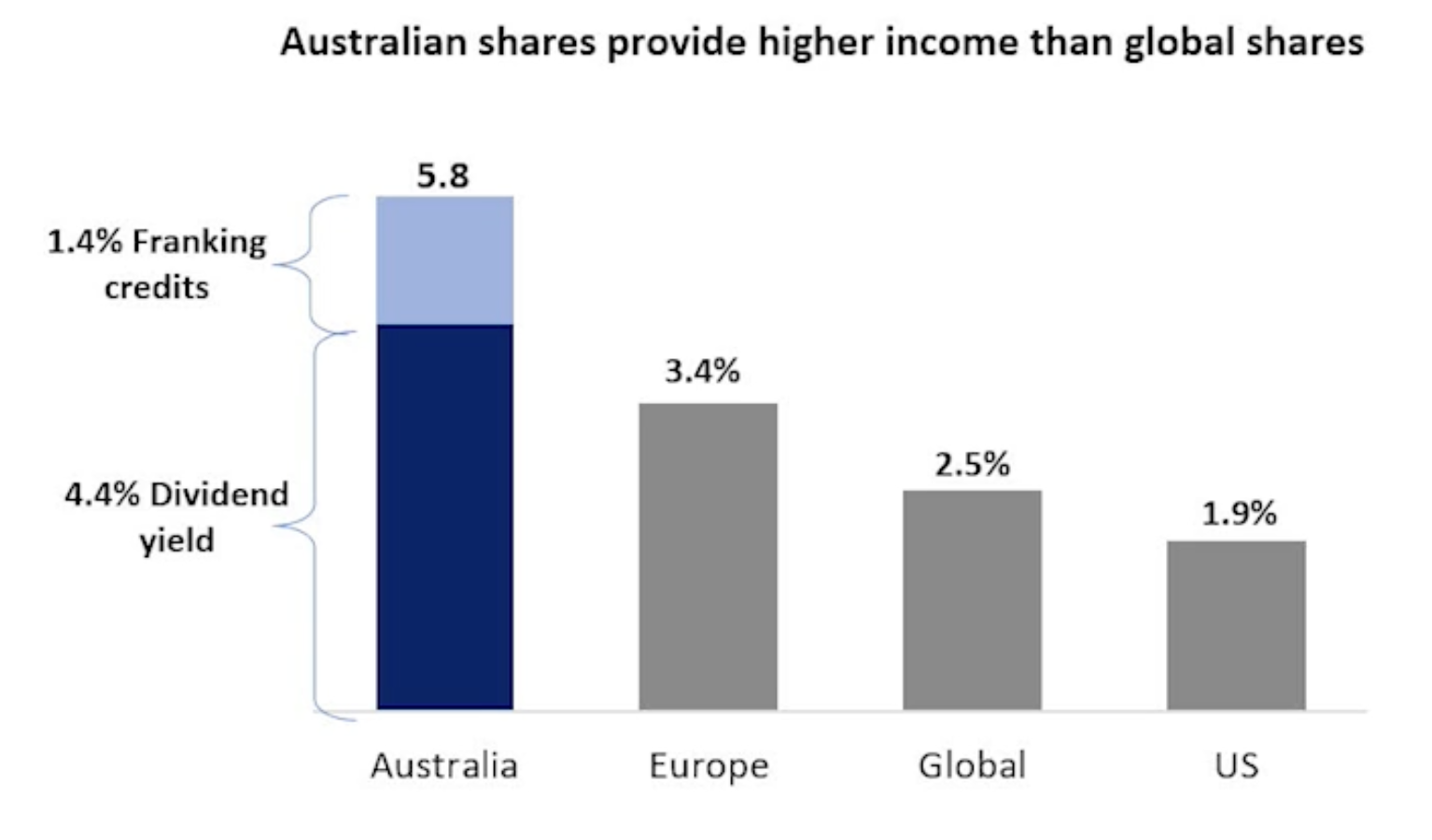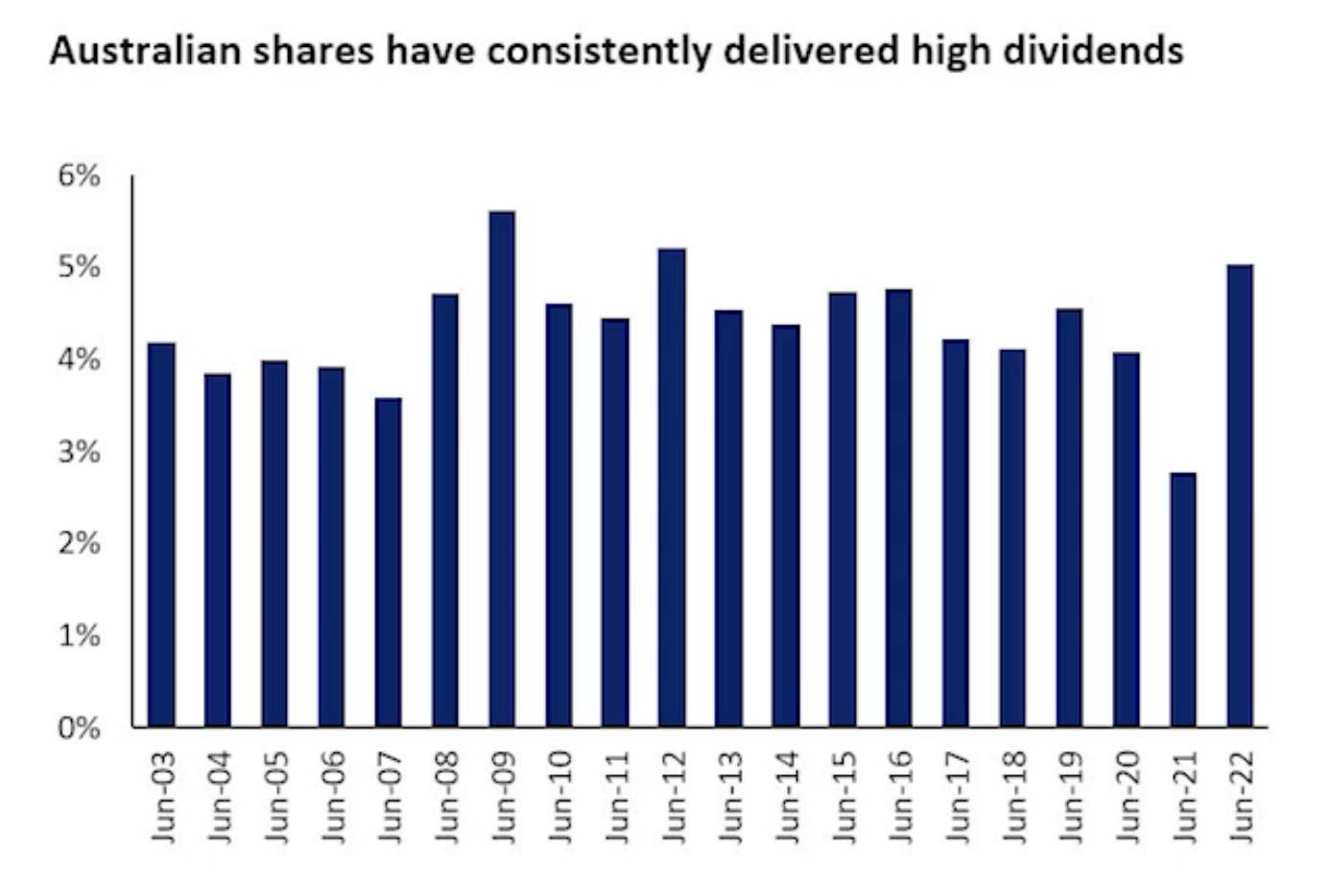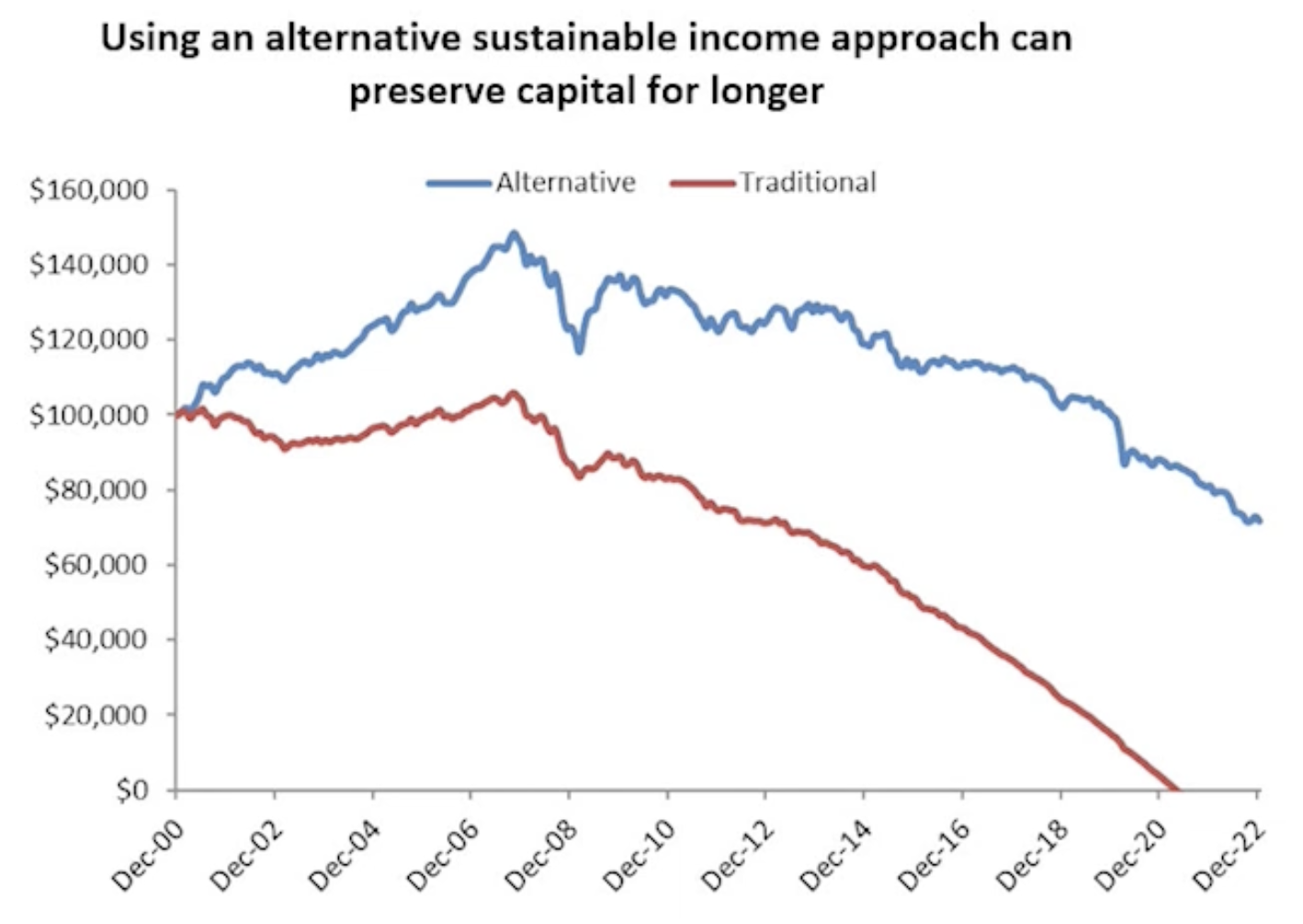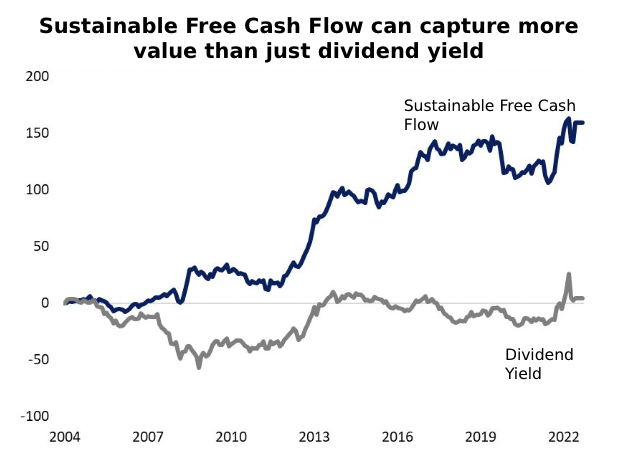Investing for income? Aussie shares are still the place to be
Now more than ever, investing for income is about more than just the search for yield.
"For income to be sustainable, capital must be largely preserved, after taking into account the impact of inflation over time," says Andrew Fraser, Portfolio Manager at Merlon Capital Partners.
So what asset class ticks both boxes?
According to Fraser, who spoke on this topic at the Challenger and Fidante 2023 Income Symposium, the answer is Australian equities.
This wire will briefly summarise the points Fraser made, namely - why Aussie equities are still an income investor's best friend, and why sustainable free cashflow is a better measure than dividend yield to find them.
I also dropped Fraser a line to find out which stocks are in Merlon's crosshairs.
Why Aussie shares?
Australian equities have long been known for income, thanks in no small part to Australia's unique system of dividend imputation.
This is borne out in the data.

Over the ten years to the 30th of June, 2022, Aussie shares delivered income of 5.8% across dividends and franking credits. This is compared to 3.4% in Europe, 2.5% globally, and 1.9% in the US.
"The franking credits system encourages boards to return profits by way of franked dividends rather than other forms of capital management such as share buybacks," says Fraser.
Even if you were to take away our dividend imputation system, Aussie dividend yield alone is markedly superior to global peers. And as the below chart illustrates, those dividends have been consistent year to year.

Sustainability of income
Income needs to be sustainable. In the context of equities, that sustainability piece largely translates to share price performance.
It's all well and good if a stock is yielding 10%, but if the underlying value of the asset is falling then logically the income derived from that investment will be proportionately impaired.
The importance of capital preservation is hugely important for retirees in the drawdown phase.

Source: Merlon, Fidante as at 31/12/2022. Chart for illustrative purposes only. Traditional defined as 70 bank & bank deposits. 30% passive Australian Shares. Sustainable Income Proxy defined as 60% Bonds & Bank deposits, 40% equally weighted portfolios of 30/60 ASX100/ASX200 constituents with highest dividend/Free cash flow yields with equally weighted “hedge” over 30/60 constituents with the worst
momentum characteristics. Illustrative purposes only, includes franking
"This [chart] shows how a retiree drawing 7% per annum income growing with inflation from their portfolio... can have vastly different outcomes when using an income fund with downside protection within the growth component of their portfolio."
Shoot for sustainable free cashflow, and the dividends will take care of themselves
Over the long term, investing for sustainable free cashflow will net investors more value and (ironically) higher dividend yield.

Portfolios are formed using four valuation ratios: book-to-market (B/M); earnings-price (E/P); free-cash-flow-to-price (F/P); and enterprise-free-cash-flow-to-enterprise-value (EF/EV).
Portfolios are formed at the end of each month by sorting on one of the ratios and then computing equally-weighted returns for the following month. The “value” portfolios contain firms
in the top one third of a ratio and the “glamour” portfolios contain firms in the bottom third. The analysis is based on S&P/ASX 200 constituents and the raw data is from Bloomberg.
"Investing in dividend yield as a measure of value is a poor approach. We value companies based on their sustainable free cash flow, which not only performs well from a total return perspective, but an outcome of this approach is a high dividend yield."
"Over the long term dividends are only sustainable if the underlying business generates sufficient free cashflow to cover them."
8 stocks Merlon likes
Financial conditions are tightening, but there are still pockets of opportunities to be found - especially for income investors.
"With a backdrop of rising premium revenue and higher returns on their investment portfolios we like the dividend growth outlook for the insurers, in particular QBE Insurance Group (ASX: QBE) and Insurance Australia Group (ASX: IAG), over the coming years," notes Fraser.
High commodities prices similarly spell good news for the dividend outlook of Australia's coal and iron miners, namely New Hope (ASX: NHC), Whitehaven Coal (ASX: WHC), BHP Group (ASX: BHP), and RIO Tinto (ASX: RIO).
Finally, notwithstanding an expected slow down in consumer spending in the coming year, retailers such as JB Hifi (ASX: JBH) and Super Retail Group (ASX: SUL) have strong balance sheets and the ability to continue to pay attractive dividends.
"While the absolute level of dividends will most likely reduce from last couple of years, the yield relative to their current share prices remains appealing."
Learn more
Merlon Capital Partners is an Australian-based boutique fund manager specialising in equity income strategies.


8 stocks mentioned
2 funds mentioned

